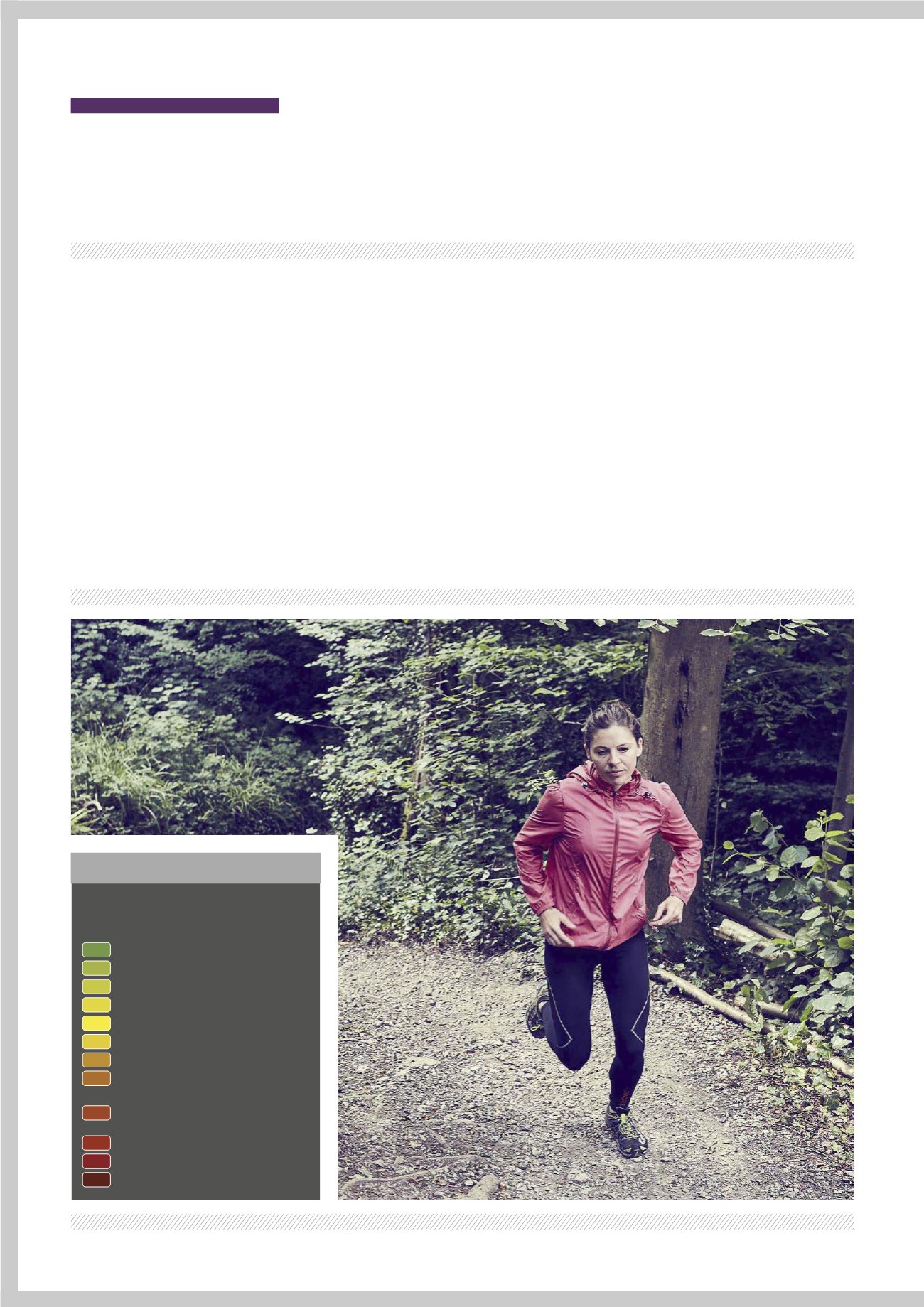

100
I
WWW.220TRIATHLON.COMI
FEBRUARY 2017
PERFORMANCE
With the Christmas eating season ticked-off, now’s the time to knuckle-down and add some
multisport brick sessions to your training mix. Here’s
Dermott Hayes
with his January plan…
BRICKFOCUS
2017 TRAINING PLANS: PART 4 OF 6
Y
ou’ve possibly spent the last few weeks
chinning port, gobbling pâté for
breakfast and rarely thinking about a
certain thing called triathlon. Now, then, is the
time to peel yourself off the sofa and refocus on
your multisport goals for 2017.
After completing a time-trial last month and
now being able to cover sprint distance in
training, short-course athletes should continue
to build on those distances during January. For
longer runs and rides, ensure that you’re ticking
off some hill work; it can either be a route that
includes various climbs or it can be repeated
climbs of a particular hill. Make hills your friend
as they’re a great way of improving overall power
for plenty of race courses.
The other major introduction in this phase is
the Brick. It’s time to start getting multisport-
specific and that means bringing in the idea of
running straight after cycling. This month we
start with an indoor-based session that allows for
multiple transitions between bike and run.
For the session, try to get into your running
stride within 2mins and then maintain pace.
Expect it to feel awkward initially and don’t be
surprised if you’re running faster than predicted.
Aim to be disciplined and maintain good form for
each rep. Continue to focus on post-exercise
stretching to prevent injuries and muscle soreness,
and also try to include some strength sessions.
ALLABOUTBUILDING
For long-course athletes, it’s all about ‘building’.
Every week and month must develop on the
previous month and specifically the objectives
are to build distance and build strength.
The most important area to work on for the
next two months is climbing on the bike and run;
this’ll be in both the longer sessions but also the
interval sessions where you’re able to control the
finer details. Monitor time, distance, incline,
power and heart rate when working through
them. Make a note, so you can repeat the sessions
and aim to match the rate of Perceived Exertion
(see below) with pace, power or heart rate.
Long-course training involves a degree of
repetition. Don’t be put off by this, many athletes
will have ‘go to’ sessions that are important to
include at least once per fortnight. These allow
you to create a picture of progress.
Where possible at this phase, include hill work
and trails in your longer runs as this can be a
great way to improve your road speed. For the
swim, include some technical drills into your
swim sessions. Coping with the increase in
overall volume of training is key so ensure you
eat and sleep well to recover.
Q
220
IMAGES
REMY WHITING, AS DESIGN
PERCEIVEDEXERTIONCHART
Follow the suggested ‘perceived exertion’
(PE) rating for each session to peg your
training efforts correctly.
NOTHING
VERY, VERYLIGHT
VERYLIGHT
LIGHT
LIGHTTOEASY
EASYTOMODERATE
MODERATE
MODERATETOMODERATELY
UNCOMFORTABLE
MODERATELYUNCOMFORTABLE
TOMODERATELYHARD
HARD
VERYHARDEFFORT
ATORCLOSETOMAXEFFORT
0
0.5
1.0
2
3
4
5
6
7
8
9
10

















